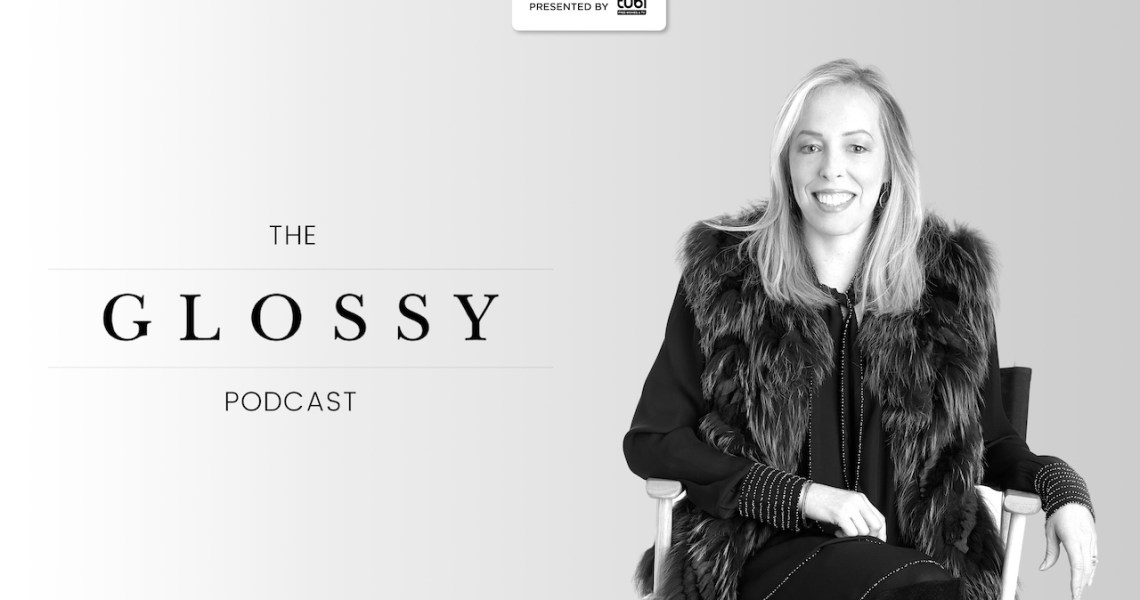Subscribe: Apple Podcasts | Stitcher | Google Play | Spotify
7 For All Mankind is nearly synonymous with the top-shelf denim trend of the early 2000s. “Premium denim didn’t exist [prior]; we really launched this category,” company president Suzanne Silverstein said on the Glossy Podcast.
Twenty years after its founding, the company is now doing a bit more reacting to established trends. The pandemic has put a premium on comfort above all, so the jeans maker is fast-tracking a few articles that focus on just that — via an “elastic waist, forgiving fit,” Silverstein said.
One focus of 7 For All Mankind that has remained intact is sustainability. The denim industry has a notoriously wasteful reputation, which it’s “probably earned,” Silverstein conceded. Two-thousand gallons of water are typically required to create one pair of jeans.
But by 2023, 7 For All Mankind expects that 80% of its products will clear certain scores by the Higg FEM standard.
“The only thing that’s really slowing us down, quite frankly, is our existing raw materials,” Silverstein said. “All new materials we work with fit our criteria.”
Here are a few highlights from the conversation, which have been lightly edited for clarity.
Ad position: web_incontent_pos1
A quick pivot toward comfort
“Obviously everyone’s life has changed in the last 8-9 months, so what the customer’s been looking for is comfort. Most of our jeans provide tremendous comfort, and of course, I think we have the best fit in the industry — but we really felt we were missing this key fit: the jogger. So we did what we call “fast track.” We looked at five SKUs — we have three live now and another two are coming. [They have an] elastic waist, forgiving fit. And actually, the first two SKUs that were live were a jogger, but with a straight leg. We’re selling through them at a double-digit rate, which means very quickly. The customer is obviously responding to this fit and what it provides, which is a great, comfortable, work-from-home 0r maybe casual-outdoor-drinks bottom. We executed in about six weeks. Our typical process is longer, but we selected fabrics we already owned and a pattern that just required some tweaks. It was an existing pattern. Those were the ways we were able to cut some of the lead time; we had to get creative. In addition to these fast-track SKUs, we had two that were online for spring, and we’re fast-tracking another three given the response to these initial styles.”
The pandemic’s damage to sustainability goals
“The only thing that’s really slowing us down, quite frankly, is our existing raw materials. All new materials we work with fit our criteria. We feel very comfortable here. We do need to work through what we currently own, because if we don’t, it’s waste. As we move through our raw materials, we will cycle into what will likely be 95% sustainable materials. We’re also working closely with our manufacturing base to make sure that their processes improve, that their Higg FEM scores — which is the basis of how we’re measuring the health of our manufacturing processes — are a certain level, so that we don’t claim sustainability unless the scores [prove it]. And then we’re launching phase 2 [of our sustainability plan] in Q1 2021 for packaging [and] recycling, which we think is an important next step. We can’t have sustainable fabric manufactured in a sustainable environment and then use a lot of plastic.”
Tough times for brick-and-mortar
“Even before the pandemic, we launched this event community outreach format to really train our people to reach out to their top clients and say, ‘Hey, let us host your charity event.’ That was, No. 1, meant to drive traffic — but also to build relationships and to become part of the community. We will pivot back to that. I do think retailers with brick-and-mortar locations will have to work harder than ever before. But some of that was true really before the pandemic. With the strength of e-comm, brick-and-mortar has been a challenging channel for some time. We were starting to go the extra mile of really building out this format last Q4. We’ll pivot back to that when it’s safe.”




